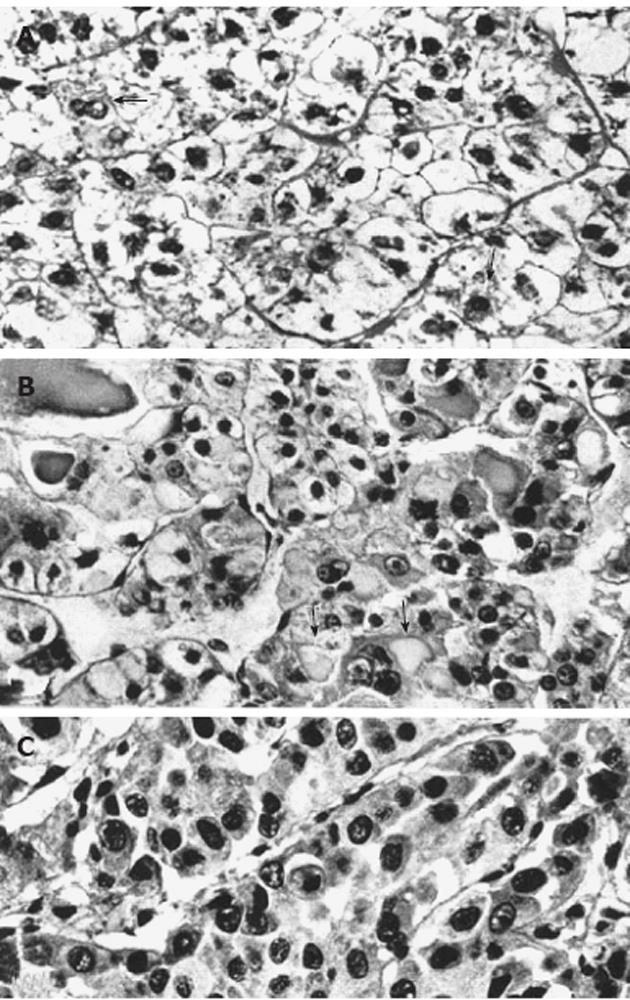Copyright
©2012 Baishideng Publishing Group Co.
World J Gastroenterol. Dec 14, 2012; 18(46): 6701-6708
Published online Dec 14, 2012. doi: 10.3748/wjg.v18.i46.6701
Published online Dec 14, 2012. doi: 10.3748/wjg.v18.i46.6701
Figure 1 Light micrographs of portions from human hepatocellular neoplasms with and without glycogenosis.
A: Clear-cell hepatocellular adenoma consisting predominantly of glycogenotic cells. In some cells (arrows) there is a reduction of glycogen and focal increase in cytoplasmic basophilia; B: Highly differentiated hepatocellular carcinoma (HCC) composed of a mixed population of clear (glycogenotic) cells, acidophilic cells (ground-glass hepatocytes, arrows), and some glycogen-poor, basophilic cells; C: Poorly differentiated, glycogen-free, basophilic HCC. All: Hematoxylin and eosin stain, x 460, from Bannasch et al[6].
- Citation: Bannasch P. Glycogenotic hepatocellular carcinoma with glycogen-ground-glass hepatocytes: A heuristically highly relevant phenotype. World J Gastroenterol 2012; 18(46): 6701-6708
- URL: https://www.wjgnet.com/1007-9327/full/v18/i46/6701.htm
- DOI: https://dx.doi.org/10.3748/wjg.v18.i46.6701









